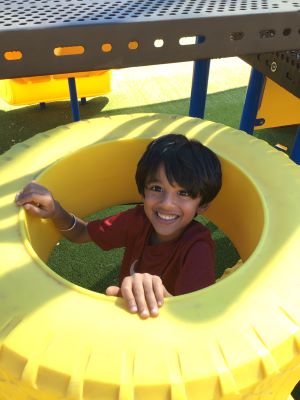
How preschoolers and kindergartners are dealing with the unique challenges of COVID-19.
Theo Stasch is 4 years old and, like a lot of kids his age, a little shy.
He attended preschool last year and his mother, Lauren Stasch, said the experience was helping to bring him out of his shell.
“Because he is quiet and shy in public, it was definitely a little culture shock for him to go from always being with his sister to being in a roomful of children his own age, many of whom he didn’t know,” she said. “He did have a few grumpy days, but he grew to love preschool and his teacher. Theo was always excited to go to school, and loved to tell us about the activities he did and how his day went.”
Preschool and kindergarten classrooms provide socialization experiences for young students that can be a big part of their childhood development. COVID-19 has disrupted those experiences for some early learners.
“It’s a bit challenging for our young distance learners because they require extra help navigating the technology and learning portals provided by their schools that an older child might be more comfortable with,” said Vandna Desai, senior director at Kiddie Academy of Yorba Linda.
Some Orange County preschools have reopened with in-person instruction, Kiddie Academy of Yorba Linda among them.
“Our academy is open and enrolling children 6 weeks through 6 years. We understand that many of our parents are essential workers that need child care to continue to serve as they do,” said Desai. “We do have some children who are enrolled here at Kiddie Academy of Yorba Linda who are distance learners, so our staff here are helping them with their classes through Zoom and Google Classroom.”
“For our preschools, we are currently offering just in-person instruction,” said Sandy Pierce, regional director of preschools for Friends Christian Schools in Yorba Linda and Garden Grove. “All three of our campuses closed down last March. Two of our campuses reopened on May 11, just for essential workers. And then as the regulations lightened, we were able to invite all of our families back in.”
According to the Orange County Department of Education’s website (as of printing), Orange County officially moved into the red tier of the new state system on Sept. 8. Local K-12 schools became eligible to reopen with physical distancing and other safety measures in place on Sept. 22. Local districts are resuming in-person instruction based on local data and their community’s needs.
“Currently all kindergarten students are meeting with their teachers online until we open for on-campus learning,” said Peggy Baerst, executive director of elementary education for Capistrano Unified School District. “We are on track to open our doors to preschool, transitional kindergarten, kindergarten and first-grade students on Sept. 29.”
Like most school districts, Capistrano Unified gave parents a choice of program options. For CUSD, Program A means 100 percent full-day, on-campus learning with extended learning. Program B is a hybrid model with 50 percent on-campus and 50 percent at-home supplemental activities and Program C is a 100 percent online model with school-site teacher support.
Parents have different reasons for utilizing the different options schools present.
Lake Forest resident Tatiana is keeping her 5-year-old daughter, Makayla, home from in-person kindergarten because of her high-risk pregnancy.
“We had to commit to full distance learning due to my pregnancy,” she said. “It’s been really hard for all of us and I know Makayla would love to do in-person class but with us bringing home a new baby soon, plus all the unknowns of the virus, we have to be safe and keep her home.”
Theo is now 100 percent distance learning at Crescent Elementary in the Orange Unified School District.
“We just received an email update about possibly going to a hybrid school day at the end of September,” said Stasch. “We can either choose for him to go back to school or continue with distance learning — we chose for Theo to go back to school as soon as he is allowed.”
The schools that are open are making adjustments to keep kids safe.
“We are doing school as normal as possible with on-campus learning,” said Pierce, “but of course one class goes to the playground at a time now, instead of two or three.”
Friends Christian Schools has also taped off squares to help children remember to keep their distance. They also keep contact with each other as minimal as possible, with only two adults allowed in any particular classroom at a time. Only assigned teachers and aides may enter. Extra staff was also hired to take on all the additional cleaning and sanitizing of the campuses.
“We take temperatures in the morning when they arrive and then several times throughout the day,” Pierce said. “We have very strict guidelines if a child or staff member is sick, if it is a COVID symptom or not, they have to go home.”
And each day she is logging on to the CDC website, the Orange County health department site and more.
“I am making sure I have the most up-to-date information out there,” she said. “I am trying to keep the staff safe, trying to keep our families safe. Our [goal] at school anyway has always been to go above and beyond the standards … we had our virtual licensing visits at all three of our preschools’ campuses and they all exceeded state expectations.”
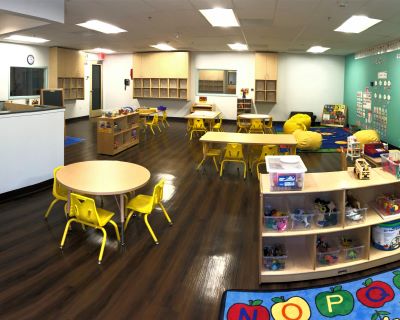
At Kiddie Academy, the campus is large enough to keep class sizes small and the teachers are able to sanitize throughout the day.
“Along with making sure we are taking all the COVID-19 precautions such as temperature checks, checking children in outside and investing into technology to keep our environment clean, we consistently teach children about proper hygiene, including hand-washing procedures,” said Desai. “Staff members are consistently cleaning and sanitizing the equipment throughout the day. Our playground is also sanitized as classes rotate in and out.”
Kiddie Academy invested in electrostatic spray technology and air purifiers and the school is professionally cleaned at the end of every day. They have secure entries and exits, and switched from fingerprint verification entry to a no-touch, COVID-19-compliant verification system.
“We are also continually training our team to ensure all COVID-19 procedures and any new CDC suggestions are executed,” Desai said.
CUSD doesn’t have kindergartners on campus yet, but preparations are being made.
“We are proceeding with caution and ensuring that health and safety protocols are in place prior to school opening,” said Baerst. “Schools have taken great measures to ensure that all students are safe.”
All students and staff will wear face coverings and class sizes will be reduced to approximately 16 students to avoid exposure. Desks are 6 feet apart when practical, and all students will face the same direction.
“All staff have received online trainings regarding safety considerations,” Baerst said. “Signage is posted around campuses and additional hand-washing stations have been installed.”
Mask wearing for little ones is being enforced as well, since CUSD’s board of trustees approved a plan that requires students ages 2 and up to wear masks.
“Face coverings are mandatory for all students from preschool to high school,” said Baerst. “The YMCA day care at our elementary sites have shared that the younger students do a great job keeping their masks on.”
Pierce said Friends Christian Schools makes child-sized masks available in every classroom and Kiddie Academy supports mask use as well.
“Here at Kiddie Academy of Yorba Linda our children are ages 6 weeks to 6 years old, therefore they are not required to wear a mask,” said Desai. “Although if the children are accustomed to wearing a mask and would like to keep it on throughout the day, we support and encourage that.”
But besides new health precautions, early learners are also adjusting to the classroom for the first time. Educators must work to preserve the social learning opportunities of early childhood education while still observing health and safety mandates.
“I am concerned about the social development in all of our children now,” said Pierce. “We know you can’t function well if you don’t get those social skills. Basically that is why a majority of parents bring their children to preschool, to develop that.”
Related Posts:
- Kids in a Pod: Parents Seeking Educational Alternatives
- What Transitioning to the New Normal Means in Education
- Educational and Entertaining Outdoor Experiences for Kids
“The pandemic has affected all child care centers. Helping our youngest children social distance and get used to the appearances of masked teachers was not a norm prior to COVID-19,” said Desai.
It’s hard for parents too, knowing their child is missing out on valuable social time.
“Makayla is super social and really misses her friends and being in a classroom,” said Tatiana.
Baerst agrees it can be harder for early learners to miss out on classroom relationships.
“The younger students absolutely want to be with their friends and hug their teachers,” Baerst said. “Distancing may be more of a challenge for them.”
But educators have gotten creative about simulating that connection.
“In our program we offer a special music class and we offer chapel time,” said Pierce. “We call those co-curricular classes.”
Those classes are being filmed for children to watch and participate in safely.
“We are still filming those because we can’t have large group gatherings. We are trying to keep those points of contact as minimal as possible. Those classes are the only screen time our kiddos are getting in our school. Because we feel those classes are such a huge part of their development.”
Kiddie Academy has created STEM projects for the children to engage their critical thinking skills.
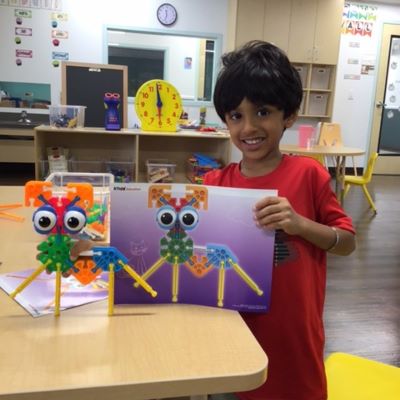
“We also open up our Academy on weekends to engage with families and the community, and so that local children have the opportunity to be involved in child development activities with other kids, such as painting and story time with ‘Cat in the Hat,’” said Desai. “We are finding that families are yearning for socialization opportunities for their children due to COVID-related restrictions.”
Despite the changes, most agree that children are adapting quickly to the new normal.
“The children have adjusted to the current model very well, because they are involved in building relationships with their peers throughout the day,” Desai said.
“Theo’s flexibility and how he has adapted to preschool, virtual preschool and virtual TK [transitional kindergarten] amazes me,” Stasch said. “Kids are extremely resilient, and while this has definitely been an adjustment for all of us, his continued excitement and love of learning helps ease a lot of concern.”
Baerst said her kindergarten teachers say this generation of 5-year-olds have adapted quickly to video conferencing and navigating their curriculum within their learning management system, Canvas.
“They have mastered mute and unmute and learned to wait their turn and listen to their classmates,” said Baerst. “They record themselves and post video entries for their teachers to assess their understanding and the teachers report that they are getting to know their students very quickly as individuals.”
Pierce said she isn’t surprised by kids’ ability to adapt.
“Kids are pretty pliable. They are the group that, for the most part, can take change and make it a good thing. We are noticing that their play has changed. If they are in the housekeeping center, they are taking their babies’ temperature or asking, ‘Do you feel good today?’” said Pierce. “We are noticing that they are being the sneeze and cough police. Reminding each other to cover your cough or sneeze in your arm. They observe their world and they are mimicking what we are doing and we realize that.”
Which is why it is so important for adults to set a good example.
“To protect the children, parents should be hand-washing for 20 seconds or more, wearing a mask in public, social distancing and avoiding touching hands to face,” said Desai.
Baerst recommends parents do a daily symptom screening with their children each morning by taking their temperature and keeping them home if they are not feeling well.
Pierce said it is important to support what is being done at school in the home too.
“So talking to them constantly about covering their cough, not putting things in their mouth,” she said. “Our families have been supportive and appreciative about what we are doing to keep their kids safe.”
Parents are confident their kids will continue to adjust as things continue to change.
“We are lucky Makayla is only in kindergarten,” said Tatiana. “Her social game has always been strong so she will be OK in that realm. I’m thankful she is young and we are able to spend extra time with her, as they grow up so quickly.”
Stasch agrees.
“While Theo’s adjustment of going back to in-school learning is definitely a concern of ours, we believe he will be able to acclimate quickly as he is seeing his teacher and hearing her voice every day via the iPad, and has already formed a bond,” she said. “We are definitely excited for in-classroom teaching to resume and are going into it with an open mind and positive attitude.”
By Sarah Mosqueda
(Photos courtesy of Kiddie Academy credit: @Krishna_business1)





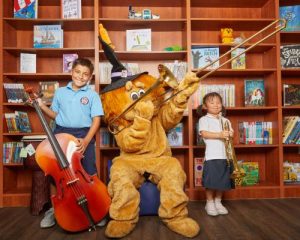
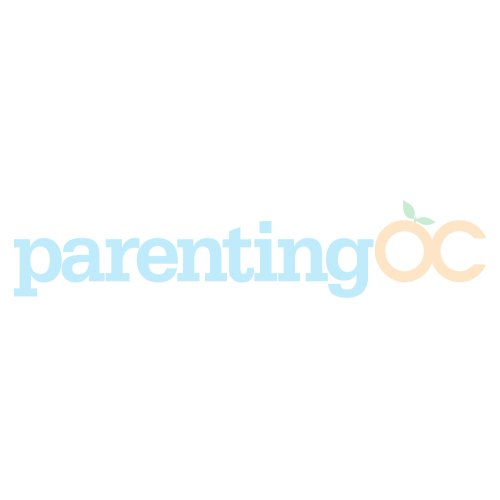
Leave a Reply